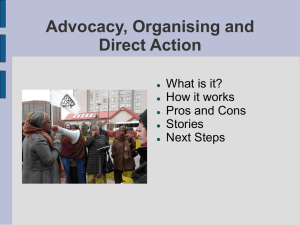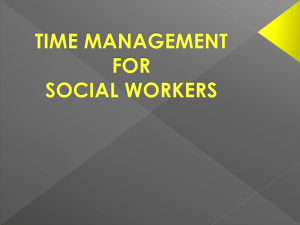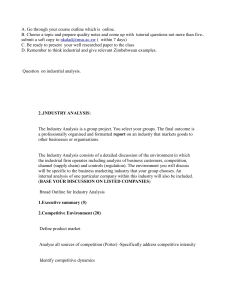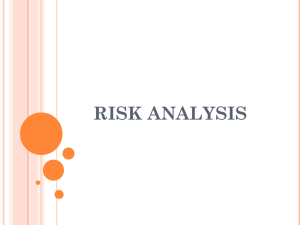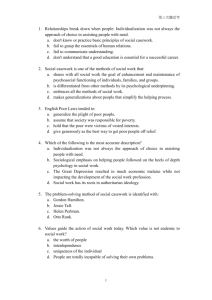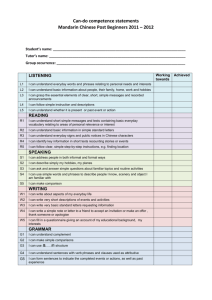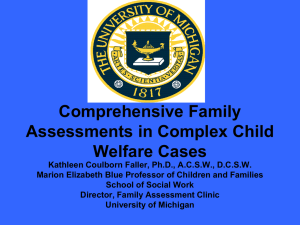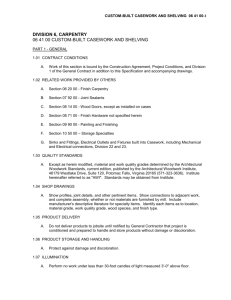CA Practice Model Definition
advertisement
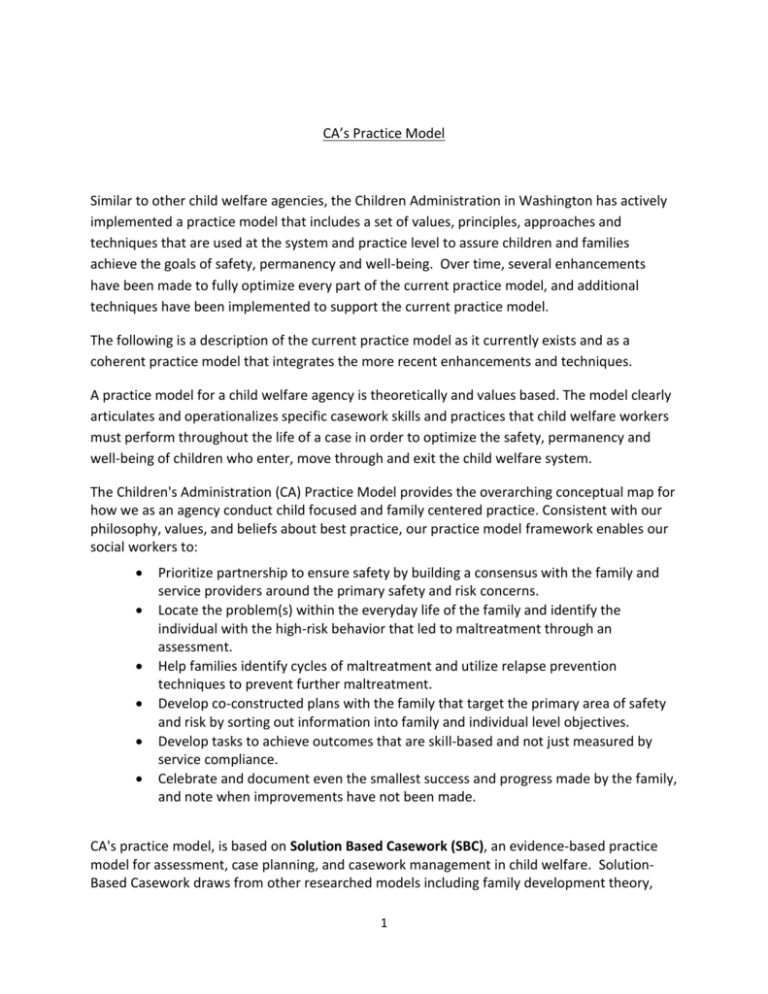
CA’s Practice Model Similar to other child welfare agencies, the Children Administration in Washington has actively implemented a practice model that includes a set of values, principles, approaches and techniques that are used at the system and practice level to assure children and families achieve the goals of safety, permanency and well-being. Over time, several enhancements have been made to fully optimize every part of the current practice model, and additional techniques have been implemented to support the current practice model. The following is a description of the current practice model as it currently exists and as a coherent practice model that integrates the more recent enhancements and techniques. A practice model for a child welfare agency is theoretically and values based. The model clearly articulates and operationalizes specific casework skills and practices that child welfare workers must perform throughout the life of a case in order to optimize the safety, permanency and well-being of children who enter, move through and exit the child welfare system. The Children's Administration (CA) Practice Model provides the overarching conceptual map for how we as an agency conduct child focused and family centered practice. Consistent with our philosophy, values, and beliefs about best practice, our practice model framework enables our social workers to: Prioritize partnership to ensure safety by building a consensus with the family and service providers around the primary safety and risk concerns. Locate the problem(s) within the everyday life of the family and identify the individual with the high-risk behavior that led to maltreatment through an assessment. Help families identify cycles of maltreatment and utilize relapse prevention techniques to prevent further maltreatment. Develop co-constructed plans with the family that target the primary area of safety and risk by sorting out information into family and individual level objectives. Develop tasks to achieve outcomes that are skill-based and not just measured by service compliance. Celebrate and document even the smallest success and progress made by the family, and note when improvements have not been made. CA's practice model, is based on Solution Based Casework (SBC), an evidence-based practice model for assessment, case planning, and casework management in child welfare. SolutionBased Casework draws from other researched models including family development theory, 1 relapse prevention theory, and solution-focused therapy. SBC serves as a consistent roadmap for establishing working partnerships to target pertinent behaviors in an effort to overcome safety threats and prevent problem relapse and recidivism. CA's work with families is anchored in the following three SBC tenets: Families encounter common everyday life challenges; Dangerous behaviors and safety threats occur within the context of everyday life and safety/case planning for prevention must be directly tied to those events; and Case planning must target the reinforcement and development of situation-specific, behavioral relapse prevention skills. A high priority for the Children’s Administration has been to eliminate racial disproportionality and disparities. Over the past two years, CA has constructed a comprehensive process to address racial disproportionality in the child welfare system by addressing key decision points throughout the time a family is involved with the agency. The Practice Model addresses cultural competence through the family development lens. In that, workers assess families specific to their family developmental stage and the everyday life tasks. While, at the same time, workers remain curious as to how a family’s culture and beliefs influence how decisions are made. These cultural considerations are incorporated into planning to ensure that interventions and assistance are specific to the needs of each family. The Practice Model provides many benefits including a shared vision, consistency in polices and practice, and improved accountability. The Practice Model ensures that families throughout Washington will encounter the same standard of practice. With great emphasis in the areas of child safety, family engagement, assessment, planning, case management, and agency culture, the Practice Model will ensure high levels of partnership with families and community stakeholders. Through the Practice Model, the assessment and prevention of child abuse and neglect are enhanced with the integration of specific assessment and planning processes. Social workers conduct a comprehensive safety assessment that begins during the CPS investigation and continues throughout the life of a case. The safety assessment framework follows the SBC conceptual model for assessment and is built on precise language, including 17 safety threats that are assessed in each case. During the initial CPS investigation, information is gathered that provides the relevant knowledge and facts necessary to assess, analyze, and create safety plans that manage threats to child safety. Safety assessment and planning is also done at certain points during the case by Family Voluntary Service workers and Child and Family Service workers. The safety assessment is integrated into the FAR Family Assessment and Comprehensive Family Assessment forms. The initial identified safety threats are continuously assessed to determine when a child can return home safely and they become the primary objectives in case planning. 2 Additionally, the Practice Model provides the parameters for how social workers conduct ongoing assessments with families, specifically when further intervention is necessary beyond the CPS investigation. Assessments have been defined as an ongoing process of gathering information on a family and its members in order to gain a greater understanding of how a family’s developmental stage, strengths, protective capacities, needs, and resources affect child safety. CA uses a FAR Family Assessment and Comprehensive Family Evaluation to document this information in CA’s information system, FamLink. The initial FAR Family Assessment and Comprehensive Family Evaluation is completed with the family within 45 calendar days upon case assignment. Subsequent assessments are updated and documented in these same tools at specific points during the life of the case. The safety assessment and planning process is incorporated within the FAR Family Assessment and Comprehensive Family Evaluation. This assessment, as guided by the assessment concepts and theories of SBC, explores and collects information on the following: Identifying the family's developmental stage(s) and the commonality of challenges within their family life. Describing in detail the specific task or challenge (i.e. supervision, medical care) that is giving the family problems and is a threat to child safety. Describing the interactions of the family and its members around this task. Identifying the parent/caregiver that presents a behavior or condition (i.e. substance use, anger, mental health) that interferes with everyday life challenges being met. Describing the patterns for their loss of control or inability to manage their behavior/condition in safe approach. Describing specific prevention skills needed to manager or overcome this individual behavior/condition. Child functioning This comprehensive assessment, done in partnership with families, leads to a case plan that is proactive, competency-based, and measured by cognitive and behavioral skills targeted to prevent future maltreatment. Utilizing the Solution Based Casework model as the basis for case planning, the case plan specifies what must change to reduce or eliminate safety threats. Case plans are co-developed and written in a language that is understandable by the family. Case plans include both family and individual objectives that are associated to the identified safety threats. These objectives are written in the positive and clearly define behaviors the family and its members will use instead of harmful or unproductive behaviors. Progress or lack of progress is documented in both the FAR Family Assessment and Comprehensive Family Evaluation. Under each objective are tasks that outline the steps needed to achieve the objective. These tasks define who, what, where, and how tasks will be completed. Both the objectives and tasks should be specific, measurable, assessment based, realistic, responsibility assigned, and timeframed. 3 The Practice Model also provides the structure for case management. Solution Based Casework management organizes all of the complexity in a case into coherent, focused, manageable and measurable elements, capable of adjusting to set backs as they occur. It operationalizes case plans into action. Good case management gets the whole team focused on assisting the family in achieving objectives on the case plan. This is done through monthly planned contact in order to help the family access a range of supports and services and to create opportunities for them to practice and demonstrate new skills. Supervisors are provided with training and an internal process of case consultation that assists their staff in returning to the fundamental core of best practice and transitioning that work back to the family. Case consultations assist staff in staying focused on the family in order to ensure that safety is being addressed. In addition, case consultations provide a learning process for better understanding the Practice Model and how to apply Solution Based Casework to specific cases. The goal of consultations is to work in partnership with staff to identify strengths of families, focus on everyday life challenges, and assist in building skills necessary for families to manage these everyday challenges and for specific individuals to develop plans to address their individual behaviors that have disrupted family life. Case consultations provide a functional format for supervisors to guide workers in best practice and ensure that activities for families are centered on eliminating threats to child safety. Case consultations are a standard of practice and are held with a unit twice per month. The purpose of the meeting is to discuss a case or two with an emphasis on practicing critical thinking in assessing child safety. The Practice Model emphasizes that child safety is paramount and that thorough assessments lead to better planning. The practice model also maintains that an ongoing focus on family engagement, involvement, and partnership provide the foundation for obtaining quality assessments that lead to better outcomes. Partnering with families and ensuring that they have a voice is at the forefront of the Practice Model. CA uses several key strategies within the Practice Model to make certain that the family voice and choice is present at all levels of intervention within the organization. Family voice includes partnerships with parents, caregivers, youth, children, extended family members, and natural supports. To ensure consistency in family engagement practices through the Practice Model and throughout Washington, CA utilizes additional practice process that include Family Team Decision-Making, Shared Planning Meetings, and Child Safety Framework. 4 5


